News
For the latest on what is happening please click here.
| 2012 | 2011 | 2010 | 2009 | 2008 | 2007 | 2006 | 2005 | 2004 | 2003 |
2011 News
December 2011 DPBRN E-Update
Thursday, December 01, 2011
Each month we highlight a recent publication that may be of interest to DPBRN members, recent study results, or other important DPBRN information. Please click here to view the pdf version. If you would like to be added to the mailing list, please contact our Director of Communications.
November 2011 DPBRN E-Update
Tuesday, November 01, 2011
Each month we highlight a recent publication that may be of interest to DPBRN members, recent study results, or other important DPBRN information. Please click here to view the pdf version. If you would like to be added to the mailing list, please contact our Director of Communications.
Fall 2011 DPBRN Newsletter
Monday, October 10, 2011
The Fall 2011 DPBRN Newsletter is now available. Please click here to view the pdf version. If you would like to be added to the mailing list to receive the electronic version, please contact our Director of Communications.
October 2011 DPBRN E-Update
Saturday, October 01, 2011
Each month we highlight a recent publication that may be of interest to DPBRN members, recent study results, or other important DPBRN information. Please click here to view the pdf version. If you would like to be added to the mailing list, please contact our Director of Communications.
Practitioner-investigator in the Minnesota region, Dr. Mike Bauer, discusses how DPBRN participation has improved his practice
Friday, September 02, 2011
I have been involved as a co-author on three manuscripts that have reported results from certain DPBRN studies. When contemplating the results and contributing to the discussion, I start to take inventory of my current practice patterns.
Recently I was involved in a manuscript that will report on the use of rubber dam by DPBRN dentists during root canal treatment. My practice pattern was to use it for all posterior teeth, but not all anterior teeth. I have changed that pattern as a result of my involvement. I met with my dental assistants to inform them of this change in my clinical practice. I also discussed these results with the other dentists in our clinic. One dentist, a 2008 graduate of the University of Minnesota, reported that she was taught that if you cannot place a rubber dam, the patient should be referred to an endodontist or an extraction should be considered. I can report that our clinic has used results from this DPBRN study and made changes that will improve the quality and safety of the care that we deliver to our patients. I can attest to the fact that DPBRN participation has changed the way that I practice, and my patients benefit from this!
September 2011 DPBRN E-Update
Thursday, September 01, 2011
Each month we highlight a recent publication that may be of interest to DPBRN members, recent study results, or other important DPBRN information. Please click here to view the pdf version. If you would like to be added to the mailing list, please contact our Director of Communications.
Dental hygiene educator in the MN Region dedicates sabbatical to increasing engagement of the dental team in practice-based research
Friday, August 26, 2011
Debra Sidd, RDH, RF, MEd has been a dental hygiene educator for more than 30 years. Recent engagement with The Dental Practice-Based Research Network (DPBRN) has further energized her already-accomplished career. Awarded a one-year sabbatical from teaching, she will use the time to promote involvement of the entire dental team in practice-based research activities. Her rationale: evidence-based improvements in care can only be achieved when the entire team is engaged in the process. She sees involvement in practice-based research as a way to support that engagement.
Teaching her dental hygiene bachelor’s degree students about evidence-based practice in 2008 led Sidd to meet DPBRN Minnesota Regional Primary Investigator, Brad Rindal, DDS and then Regional Coordinator, Merry Jo Thoele, RDH, MPH. She states, "Being fairly new to research myself, their insights and expertise inspired me and informed my course design." Sidd invited them to participate as guest speakers and developed a better understanding of DPBRN activities when Dr. Rindal addressed the network with her students. "As chair of the dental hygiene program at Normandale Community College from 2008-2010, I saw the need to sequence evidence-based decision making (EBDM) throughout our dental hygiene curriculum."
Seeing the importance of EBDM in the educational setting, Sidd is now inspired to engage providers already in practice. With input from Dr. Rindal and Regional Coordinators Emily Durand, RDH, RF and Sarah Basile RDH, MPH, Sidd is organizing a symposium for the entire dental team with the following two strategic priorities: (1) to effectively increase the participation of the dental team in dental practice-based research network activities; (2) to actively engage an effective team approach to evidence-based improvements in patient care.
The event will be highly collaborative, engaging a range of stakeholders in the planning process. Sidd states, "I am grateful to have this opportunity and hope our efforts encourage effective partnerships which truly impact the quality of dental care." The symposium will take place Friday, May 11th, 2012 at Normandale Community College in Bloomington, MN (details to follow). Contact: Emily Durand.
DPBRN Blood Glucose Study featured in NNOHA Newsletter
Thursday, August 18, 2011
The National Network for Oral Health Access (NNOHA) featured a story on DPBRN practitioner-investigator Dr. Gary Lease and his staff from the South Lake Community Health Center Dental Clinic in Groveland, Florida in its Summer 2011 quarterly newsletter. Dr. Lease participated in DPBRN Study 15 entitled ‘Blood Glucose Testing in Dental Practice'. The story highlights a patient who, because of enrolling in the study, was diagnosed with diabetes and is now under medical care. Please click here to view the newsletter (see page 3 for the story).
DPBRN HealthPartners Principal Investigator awarded a grant from NIDCR to examine the question: Does Participation in a Dental Practice-Based Research Network Impact Treatment?
Wednesday, August 10, 2011
Dr. Brad Rindal, Director of the DPBRN Minnesota region and Principal Investigator at the HealthPartners Research Foundation, was recently awarded a grant from NIDCR (R03-DE-022089) to examine the question: Does Participation in a Dental Practice-Based Research Network Impact Treatment?
The study addresses this important question by examining actual care-delivery patterns of dentists. Dr. Rindal and his investigative team will utilize electronic clinical data from the HealthPartners Dental Group (HPDG), including diagnosis codes, caries depths and treatment data to determine if dentists with a high level of DPBRN participation are quicker to assimilate DPBRN research into their practices. HPDG has a thorough dental record that is easily married with HealthPartners administrative data. Patient diagnosis and treatment data aggregated by provider will be examined in 2005, prior to the implementation of the DPBRN. They will then examine the dental practice patterns again in calendar year 2009 and will evaluate the personal characteristics of dentists in calendar year 2005 among dentists who later went on to participate in DPBRN. The dentists will be stratified into three categories based on level of involvement in the DPBRN: not enrolled, enrolled but minimally involved, enrolled and involved.
Congratulations to Dr. Rindal and his colleagues at the HealthPartners Research Foundation!
August 2011 DPBRN E-Update
Monday, August 01, 2011
Each month we highlight a recent publication that may be of interest to DPBRN members, recent study results, or other important DPBRN information. Please click here to view the pdf version. If you would like to be added to the mailing list, please contact our Director of Communications.
First DPBRN Japan study has started
Monday, August 01, 2011
The Dental PBRN Japan has begun its first study entitled "Assessment of Caries Diagnosis and Caries Treatment", led by Dr. Naoki Kakudate of the Kyoto University School of Medicine and Public Health. Data collection is currently underway. Please click here to view the Japanese version of the questionnaire. This study is modeled after DPBRN Study 3 of the same name. DPBRN has been collaborating with this new network in Japan as it builds its infrastructure and research capabilities.
Summer 2011 DPBRN Newsletter
Monday, July 18, 2011
The DPBRN Summer 2011 Newsletter is now available. Please click here to view the pdf version. If you would like to be added to the mailing list to receive the electronic version, please contact our Director of Communications.
July 2011 DPBRN E-update
Friday, July 01, 2011
Each month we highlight a recent publication that may be of interest to DPBRN members, recent study results, or other important DPBRN information. Please click here to view the pdf version. If you would like to be added to the mailing list, please contact our Director of Communications.
DPBRN presents posters at PBRN National Research Conference
Tuesday, June 28, 2011
DPBRN presented three posters at the 2011 annual Practice-Based Research Networks National Research Conference June 22-24, 2011, in Bethesda, Maryland. This is an annual research conference of PBRNs sponsored by the federal Agency for Healthcare Research and Quality (AHRQ).
The three DPBRN posters were entitled: (1) "Regional variation in information use by Dental PBRN practitioners"; (2) "Practice improvement associated with Dental PBRN participation"; and (3) "Characteristics of questionable tooth decay lesions: findings from The Dental Practice-Based Research Network". In addition to presenting three posters, DPBRN was discussed as a model for inter-professional research collaborations during a plenary presentation entitled "Collaboration: The Experience of Three PBRNs" by Dr. Michael Harrington, Director of the Alabama Primary Care Research Collaborative.
Mainly in attendance are persons involved in medical primary care PBRNs. However, a DPBRN representative has attended this annual meeting each year since 2004. The meeting's web site and agenda can by found by clicking here (external site).
June 2011 DPBRN E-update
Wednesday, June 01, 2011
Each month we highlight a recent publication that may be of interest to DPBRN members, recent study results, or other important DPBRN information. Please click here to view the pdf version. If you would like to be added to the mailing list, please contact our Director of Communications.
Network-wide results of DPBRN study "Prevalence of questionable occlusal caries lesions" are now available
Thursday, May 26, 2011
The network-wide results for the DPBRN study, "Prevalence of questionable occlusal caries lesions", are now available with individual results to be mailed out to participating practitioners shortly.
The aims of this study are to (1) quantify the prevalence of questionable occlusal carious lesions in permanent teeth in the first 100 consecutive eligible patients of DPBRN practitioner-investigators; (2a) for unopened questionable occlusal carious lesions, to test the hypothesis that the patient’s baseline caries risk is significantly associated with lesion description (i.e., perceived caries status); and (2b) for opened questionable occlusal carious lesions, to test the hypothesis that the patient’s baseline caries risk is significantly associated with caries depth. These aims were met by enrolling 82 practitioner-investigators, each of whom recorded information about 100 consecutive patients and 25-50 consecutive questionable early occlusal caries lesions on a 2-page questionnaire. The study recorded the reason why these occlusal lesions were questionable, the tools used to diagnose the lesions, the reason why a certain treatment was rendered, and the depth of the lesions when treated operatively.
Please click here to to see detailed report, overall and by region. Please click here to see graphical presentation of study findings, also overall and by region.
We hope that you find these results to be interesting. Thank you for your participation!
DPBRN featured in NNOHA Newsletter
Wednesday, May 18, 2011
The National Network for Oral Health Access (NNOHA) featured a testimonial of DPBRN practitioner-investigator Dr. Adolphus Jackson, of Birmingham, AL in its Spring 2011 quarterly newsletter. Please click here to view the article.
Spring 2011 DPBRN Newsletter
Friday, May 06, 2011
The DPBRN Spring 2011 Newsletter is now available. Please click here to view the pdf version. If you would like to be added to the mailing list to receive the electronic version, please contact our Director of Communications.
Communication from NIDCR about practitioner-investigators in The National Dental PBRN
Friday, May 06, 2011
NIDCR asked that we forward this message:
NIDCR is strongly committed to engaging a diverse and an expanded body of dental practitioners in the future National Dental Practice-based Research Network. Please be assured that practitioners currently engaged in NIDCR funded practice-based research will have a vital and essential role in the future National Dental PBRN. NIDCR has provided a link to important information for PBRN practitioners on the NIDCR website. To view this information, please click here.
Please do not hesitate to contact your PBRN Director or Don DeNucci at NIDCR if you have any additional questions pertaining to your role in the National Dental PBRN.
May 2011 DPBRN E-update
Sunday, May 01, 2011
Each month we highlight a recent publication that may be of interest to DPBRN members, recent study results, or other important DPBRN information. Please click here to view the pdf version. If you would like to be added to the mailing list, please contact our Director of Communications.
Application Successfully Submitted in Response to the National Dental PBRN Limited Competition
Friday, April 29, 2011
As follow-up to our news item of December 16, 2010 entitled "New National Dental Practice-Based Research Network Limited Competition (U19)", we successfully submitted our grant application for renewal. Although it was not due until May 3rd, we submitted our application on April 28th.
Recall that the National Institute of Dental and Craniofacial Research (NIDCR) funded The Dental PBRN for 2005-2012. NIDCR issued a Funding Opportunity Announcement (FOA) for a limited competition that invited applications from the incumbent NIDCR-funded PBRNs to establish a National Dental Practice-Based Research Network. The Institute will support one national network.
Dental PBRN Study #14 on Smoking Cessation Yields Results
Thursday, April 14, 2011
Researchers with the Dental PBRN study entitled "Hygienists’ Internet Tobacco Cessation Study" are helping dental practices make a difference in the lives of their patients. From the time the study began, over 700 dental practices nationwide expressed interest in participating in the study and the enthusiasm has continued. Ultimately, only 100 practices were randomized into the study, a limitation required by the study protocol. Hygienists, dentists, and office staff from 100 dental practices across eight states are actively participating in the study and reporting success with using the study’s online tools to educate patients about smoking cessation.
Recently, one practice reported that one of its patients returned for a routine office visit and staff noticed that the patient’s demeanor and appearance were different. When asked about it, the patient reported that as a result of participating in the study, he had finally succeeded in quitting smoking. After the hygienist referred the patient to the study’s website for tobacco control, the patient, who was a long-time smoker, followed advice provided on the website and took steps to quit. He explained that although he had made earlier attempts to quit, hearing the advice and encouragement at the dental office and receiving advice from the website, was "the straw that broke the camel’s back".
Other patients have found similar results after using the site, with comments such as "Thanks for your help. This is the best help I have ever received" and "I appreciate you being here for me because it wasn’t easy for me to quit but I'm glad I did. I was just told I'm cancer-free as of Feb 3rd this year."
We congratulate these and other patients, as well as the dental offices participating in the study! DPBRN’s mission is "To improve oral health by conducting dental practice-based research and by serving dental professionals and their patients through education and collegiality." For this study, we may not only be improving oral health, but general health as well!
Dental PBRN Blood Glucose Study #15 Has a Major Impact on a Study Participant
Thursday, April 14, 2011
Dr. Gary Lease and his staff from the South Lake Community Health Center Dental Clinic in Groveland, Florida participated recently in the DPBRN Study #15 entitled ‘Blood Glucose Testing in Dental Practice’. The Health Center serves four counties and draws patients from four additional counties. The population served is rural, including under-served lower income patients and migrant workers, as well as full-fee patients. Dr. Lease, also a member of the National Network for Oral Health Access (www.NNOHA.org), has participated in several DPBRN studies, and was glad to learn about the study that sought to determine the feasibility of doing random blood glucose screening for dental patients at risk for abnormal readings.
Results from the study were recently presented at the International Association for Dental Research (www.IADR.com) annual meeting in March 2011. Blood glucose screening in dental practice was found to be feasible and was viewed positively by participating clinics and their patients. Additionally, the study had a particularly important impact for one of Dr. Lease’s patients. This patient was being seen for a routine prophylaxis appointment and agreed to participate in the study. The initial blood glucose reading was very high (465 mg/dl; normal random value is 80-120 mg/dl) and stayed high when the test was repeated. Dr. Lease asked the patient whether he or his family had a history of diabetes, but the patient was unaware of any problem. At that point, the study protocol required Dr. Lease to refer the patient to a physician. Because the dental clinic is associated with a medical clinic, the dental staff immediately called to see if they could have the patient seen by a medical provider. Because of the extremely high reading, the medical clinic advised that the patient should go immediately to the emergency room.
The patient instead reported very soon after the dental visit to a medical clinic. At that time, he was diagnosed with diabetes for the first time and is now under the care of a physician. Although he said he felt fine at the initial study visit, he realized after the diabetes diagnosis that he had been having some health problems. The patient is now on medication for diabetes and he stated that he is being more careful with his diet, both of which have improved his overall health. Today, the patient feels lucky that he participated in the study and said "I am happy I had the testing; if not for the test (study) I would still not know. I had a problem with my eyesight, my eyes hurt, and that is better. I am so glad that I was able to be part of the test and I am very thankful."
The Community Health Center Dental Clinic at South Lake identified a number of patients enrolled in the study with elevated readings who also were unaware of the problem. Dr. Lease sees the "test as a benefit to the overall health of the patient, treating the whole patient, not just their oral condition. A poorly controlled diabetic can be expected to respond differently than a well-controlled one, in terms of healing and tissue response". With the clinic serving a population which seems to have more periodontal disease, Dr. Lease says he is now "more inclined to suggest medical follow-up if a person comes in with severe periodontal disease. I ask if they have a family history or have been tested for diabetes. The blood glucose testing by finger stick is an efficient and easy tool and I hope in the future our profession is able to incorporate it into daily clinical practice".
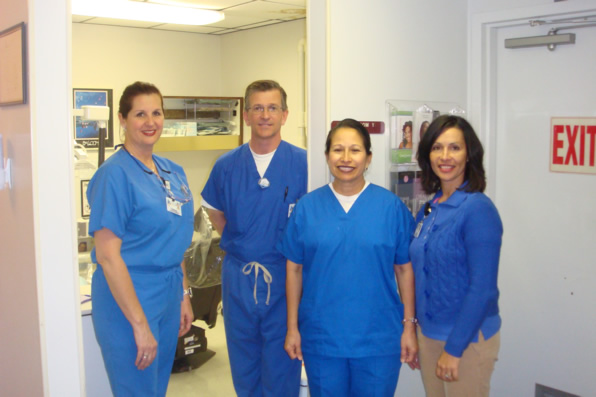 |
 |
DPBRN April 2011 E-update
Friday, April 01, 2011
Each month we highlight a recent publication that may be of interest to DPBRN members, recent study results, or other important DPBRN information. Please click here to view the pdf version. If you would like to be added to the mailing list, please contact our Director of Communications.
DPBRN posters and presentations at IADR/AADR meeting in San Diego, CA
Monday, March 28, 2011
DPBRN was well-represented at the 40th Annual Meeting of the International and American Associations for Dental Research in San Diego, CA March 16-19, 2011. DPBRN had 14 abstracts, given as oral presentations or posters, which garnered a lot of interest in our network. Congratulations to all the presenters for a job well done! Click here to view the abstract list.
 |
 |
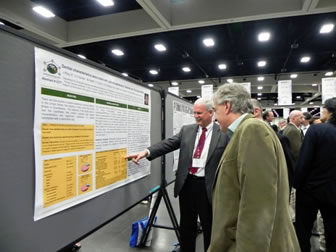 |
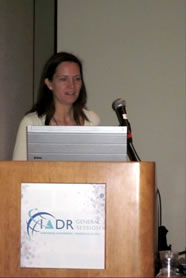 |
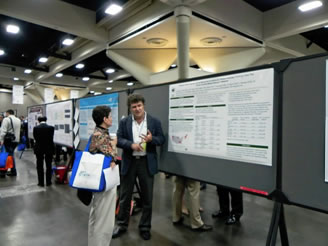 |
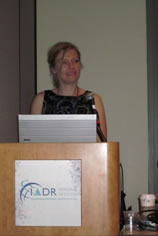 |
Japan develops a Dental PBRN
Friday, March 25, 2011
In September 2010, Naoki Kakudate, DDS, PhD, MPH, a faculty member at the Graduate School of Medicine and Public Health, Kyoto University, Japan, visited Birmingham, Alabama to learn about the Dental PBRN Network Chair and Coordinating Center groups. Then he went on to Portland, Oregon to attend the annual face-to-face meeting of the DPBRN administrative groups (Executive Committee, Steering Committee, Regional Coordination Group). See the related news item about his visit (dated October 10, 2010) here.
Using the knowledge he gained from his visits helped him establish "Dental PBRN Japan", for which he serves as Director. Please click here to visit the website.
We congratulate Dr. Kakudate on his accomplishments. DPBRN and Dental PBRN Japan hope to collaborate on certain projects in the future.
Article on DPBRN studies featured in HealthPartners Dental Group Weekly Reader
Monday, March 14, 2011
The HealthPartners Dental Group Weekly Reporter recently featured The DPBRN’s two ONJ reports. "Risk Factors for Osteonecrosis of the Jaws: a Case-control Study" and "ONJ in Two Dental Practice-Based Research Network Regions" can be found in February’s Journal of Dental Research. Click here to read the article from HealthPartners.
DPBRN March 2011 E-Update
Tuesday, March 01, 2011
Each month we highlight a recent DPBRN publication, recent study results, or other important DPBRN information. Please click here to view the pdf version. If you would like to be added to the mailing list, please contact our Director of Communications.
Article on DPBRN featured in the University of Florida Post: "Science in the Real World"
Wednesday, February 16, 2011
The University of Florida Post recently wrote an article entitled "Science in the Real World" which discusses The DPBRN and the impact it has had in conducting research in daily clinical practice. Click here to read the article.
DPBRN February 2011 E-update
Tuesday, February 01, 2011
Each month we highlight a recent DPBRN publication, recent study results, or other important DPBRN information. Please click here to view the pdf version. If you would like to be added to the mailing list, please contact our Director of Communications.
Winter 2011 DPBRN Newsletter
Tuesday, January 18, 2011
The DPBRN Winter 2011 Newsletter is now available. Please click here to view the pdf version. If you would like to be added to the mailing list to receive the electronic version, please contact our Director of Communications.
January 2011 DPBRN E-Update
Monday, January 03, 2011
Each month we highlight a recent DPBRN publication, recent study results, or other important DPBRN information. Please click here to view the pdf version. If you would like to be added to the mailing list, please contact our Director of Communications.

